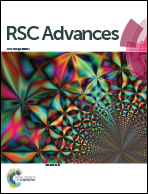Phosphate adsorption on novel hydrogel beads with interpenetrating network (IPN) structure in aqueous solutions: kinetics, isotherms and regeneration
Abstract
Adsorption has attracted much attention for its effectiveness, low cost and the possibility of regeneration among many phosphorus removal methods. In this study, a novel interpenetrating network (IPN) structural hydrogel based on N-isopropylacrylamide and aluminum alginate was synthesized and applied for phosphate adsorption. SEM, FTIR and XPS were applied to characterize the poly N-isopropylacrylamide/aluminum alginate (PNIPAM/AA) IPN hydrogel beads before and after adsorption. It was found that the maximum adsorption capacity was reached at pH = 3, adsorption capacity decreased with adsorbent dosage increasing, and SO42− had much more negative effects on phosphate adsorption compared with Cl− and NO3−. A pseudo-second-order kinetic model and intra-particle kinetic model fitted well with the experimental data, indicating chemical adsorption and intra-particle diffusion was the rate-controlling step of phosphate adsorption. Moreover, equilibrium isotherm experimental data were well described by the Freundlich and Slips model, suggesting heterogeneous multilayer adsorption was dominant during adsorption process. The regeneration study indicated that the adsorption capacity of adsorbent remained at a relatively high level after five times of regeneration. Column adsorption and regeneration results showed PNIPAM/AA hydrogels had strong phosphate adsorption capacity and had potential in large scale application. Hence, PNIPAM/AA hydrogel beads could be a promising adsorbent for phosphate recycle in the future.


 Please wait while we load your content...
Please wait while we load your content...